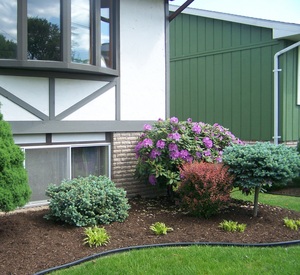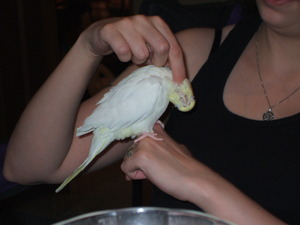Deer resistant landscape trees many not seem like an important investment, but if you live in an area with a heavy deer population, you’ve seen the damage that a hungry deer can do. Just like any other danger to a tree’s survival, deer can eat on the bark and leaves of a tree making it unsustainable for growth. Fortunately, there are deer resistant landscape trees that will allow you to have a vibrant and thriving yard design. These five deer resistant tree suggestions will keep your lawn looking its best all year round.
#1 Blue Nest Spruce
The Blue Nest Spruce is a slow growing, dwarf size evergreen that has blue and green foliage. If you have a rock garden that facilitates your landscape design, a Blue Nest Spruce will thrive in those surroundings. Due to its magnificent color and hearty design, the Blue Nest Spruce will add an eye-popping element to your landscape. This dwarf variety hosts an attractive globe of richly colored needles and requires minimal watering, fertilizing, and pruning. Due to its versatility, It is also a fantastic addition to a shrub borders. The Blue Nest Spruce enjoys a sunny habitat with well-drained soil. The Blue Nest Spruce is an excellent tree for adding depth, color and texture to your landscape design. Best of all, it is known for being completely deer resistant.
#2 The Gingko Tree
This ageless wonder makes for the perfect deer resistant addition to a landscape design. The Gingko tree can have a lifespan up to several hundred years, so it is known for its superb structure and stability. The foliage on the Gingko tree turns bright yellow in autumn making it a showpiece for the yard. In addition, the Gingko tree produces fruit that is an orange color when it is ripe. In addition, this tree can grow to be quite tall, so pruning could be a necessity depending on your yard’s needs. The Gingko is indigenous to China, Japan, and Korea, where it first found its place in the mountain regions. Today the tree is often planted in suburbs, populous cities, and highly trafficked areas due to its resistance to urban emissions and wildlife.
#3 The Mimosa Tree
The Mimosa tree, known for its silk features, is known for its dramatic ornamental features. Of all the deer resistant landscape options, the Mimosa tree could be the most lovely. The gorgeous scented fluffy flowers and dramatic fern-like foliage make this one a real eye pleaser. Due to the fragrant characteristics of this tree, it is attractive to bees, butterflies, and birds. Typically, the Mimosa tree grows to about twenty feet in height thus making it a wonderful complementary asset for a landscaped yard. Mimosa trees grow very quickly but don’t have an extremely long life span. Interestingly, each leaf is made up of many smaller tiny leafs that are covered in little white fuzzy hairs. That is why the tree is known for its silk like appearance. Due to its deer resistant nature, it makes for a superb addition to a thriving landscape design.
#4 The Sassafras Tree
Versatility and widespread appeal make the Sassafras tree a perfect fit for any landscaped garden area. If you want a yard design that looks quite natural and ethereal, the Sassafras will incorporate into the scheme quite appropriately. The Sassafras tree can be found in a wide range of regions and climate zones within the United States including Maine and Texas. A unique characteristic of this deciduous tree is that it has leaves that are shaped like a fluffy glove. Its yellow flowers bloom in the spring and omit a lovely fragrance. The foliage of the Sassafras tree are a soft green color and and turn vibrant colors during the fall. Deer resistant landscape trees might not be appealing to deer, but their beauty and attractive fragrance makes the Sassafras a people’s favorite.
#5 The Red Maple Tree
If you are in need of a taller landscape tree for the corner of your yard, the deer resistant Red Maple tree is a likely alternative. This lovely deciduous tree can grow up to forty feet in height. Due to the variegated light and dark green leaf combination, the Red Maple tree adds drama and color to a landscaped yard. In early spring, red flowers encompass the branches of the tree making room for the fresh leaves that are preparing to form. Additionally, the leaves of the Red Maple turn a beautiful red color during the fall season. Due to the Red Maple’s quick growth, sap can be used to make syrup but its flavor is not as tasty as that from other maple varieties. The attractive red colors and deer resistant qualities make it a beautiful addition to a landscaped yard.
Deer resistant landscape trees are critical to the maintenance and design of a well-planned yard. Chewed pieces of bark, damaged leaves, and broken branches are not an eye-appealing feature of an outdoor yard design. These tree varieties can help you have a landscape that is a true neighborhood showpiece.










